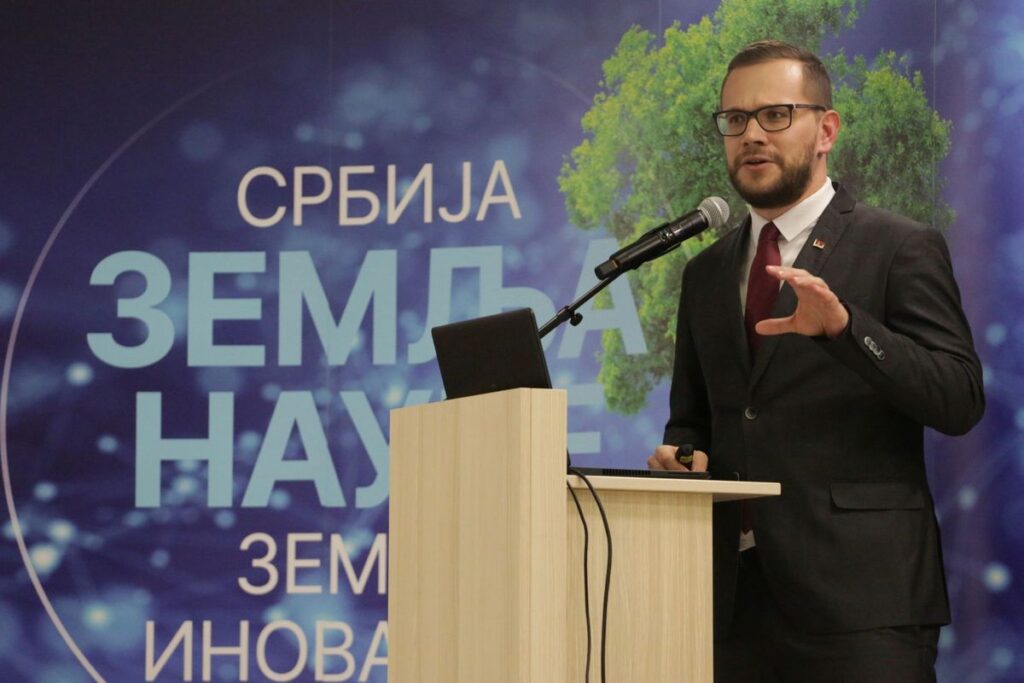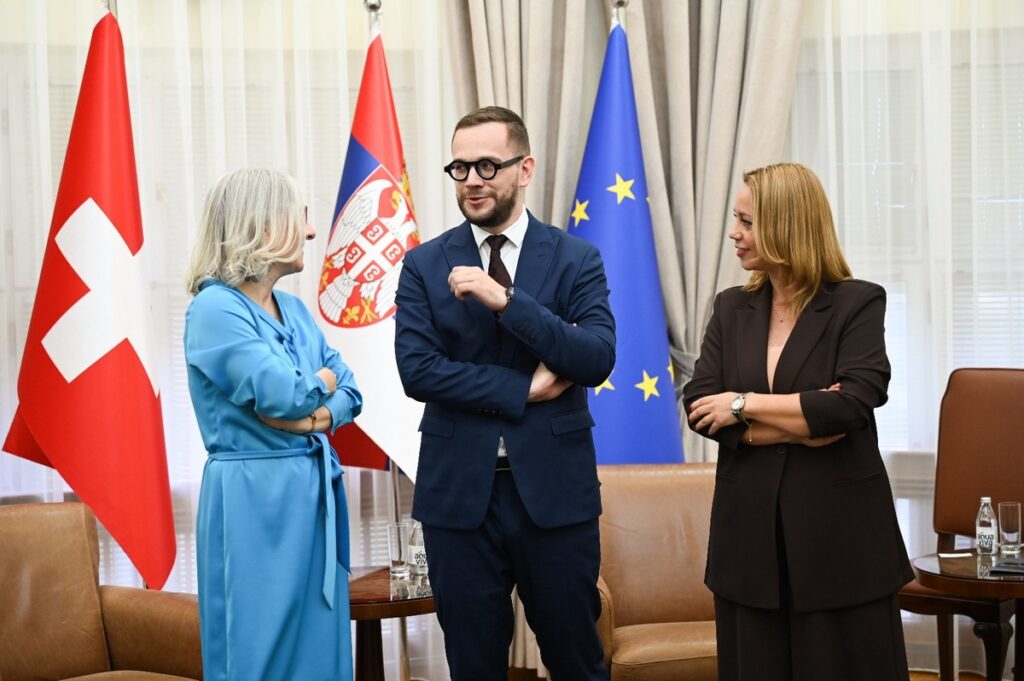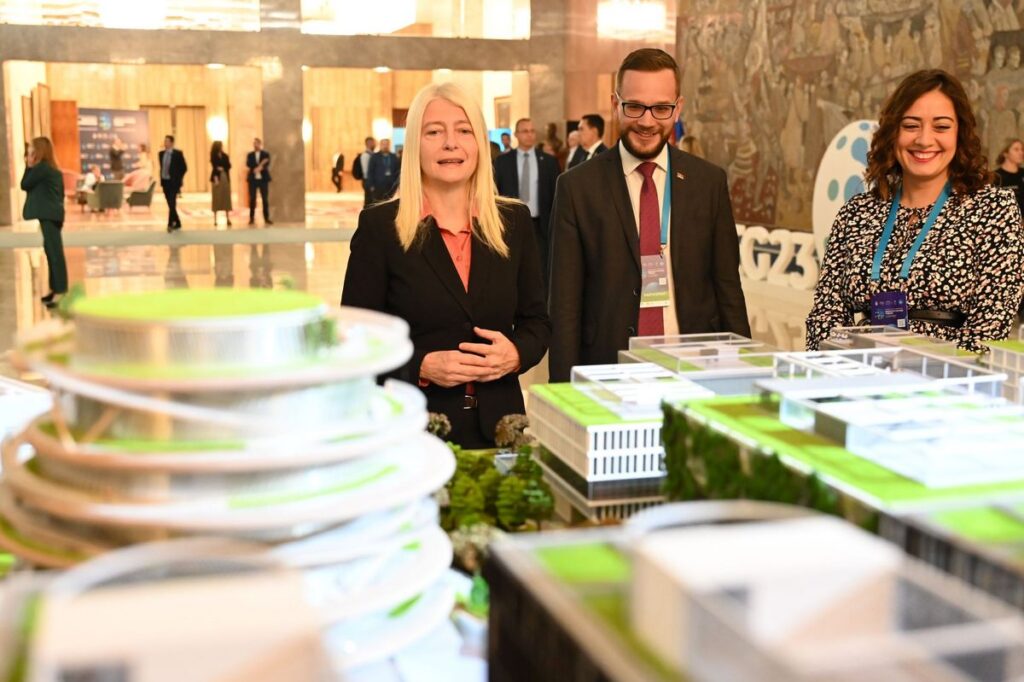Aligning national priorities with global trends through diplomacy, research and regional engagement

In this interview for Diplomacy & Commerce, Jovan Milić, Special Advisor to the Minister of Science, Technological Development and Innovation and Head of Cabinet, discusses how Serbia is aligning its scientific vision with international cooperation, digital transformation and green transition goals. From the eNauka portal to science diplomacy and personalised medicine, Milić sheds light on the country’s next strategic moves in research and innovation.
What are the latest developments regarding the “eNauka” portal – how many active users are there today, and what are the plans for improving access to scientific results?
For over two years now, the eNauka portal has served as the central digital platform for monitoring the scientific output of researchers and institutions in the Republic of Serbia. It is designed to provide a unified overview of scientific production, research areas and the achievements of research organisations and their researchers.
At present, the portal stores data on more than 20,700 active researchers (who are also users) in Serbia, 206 research organisations, and over 770,000 scientific results. eNauka makes a significant daily contribution to the transparency and accessibility of the achievements of Serbia’s scientific community, fosters collaboration between research groups, and increases the visibility and impact of our research institutions and their results within the international scientific arena.
The Ministry is also actively working on finalising and launching a new digital portal focused on open research infrastructure. This new portal will provide a centralised overview of all scientific research equipment at research organisations in Serbia, which will be made available to both the scientific community and the private sector.
Both projects have been developed with strong support from Minister Balint, which has proven to be a key factor in their successful realisation.

The Science Fund recently launched the “Green Programme for Science–Industry Collaboration” – how does this programme work in practice, and what are some key examples of successful implementation?
The “Green Programme” is an important step towards building a sustainable bridge between science and industry, to address the challenges of the green transition through research. The programme operates on a co-financing model, where teams of researchers and industry partners jointly develop solutions in the areas of energy, circular economy, environmental protection and sustainable agriculture.
One example of successful implementation is the project focused on developing biodegradable materials for the food industry, a partnership between the Faculty of Technology in Novi Sad and a domestic packaging company. Another is the project on energy-efficient systems in industrial plants, conducted in cooperation with the “Mihajlo Pupin” Institute, which demonstrates how scientific solutions can directly contribute to reducing CO₂ emissions.
The Green Programme not only stimulates innovation but also raises environmental awareness among stakeholders. As a country, we are keeping pace with the evolution of our society – new generations of young, accomplished individuals have emerged. For many of them, the green agenda is a top priority.
The term “science diplomacy” is often highlighted. What does it entail, and how important is it for Serbia?
Science diplomacy refers to the strategic use of science, technology and innovation to strengthen international relations and achieve foreign policy objectives. It is a bridge between the laboratory and the negotiating table – a bridge that connects scientific excellence with the contemporary challenges of international politics. As one of the great diplomats, Harold Nicolson, once said: “Diplomacy is the management of international relations through negotiation.” In a similar vein, science diplomacy uses the language of knowledge to bridge divides and open doors to cooperation where traditional diplomacy might not even look.
For example, when we spoke at the session of the UN Commission on Science and Technology, our focus was on the 2030 Agenda and Serbia’s role in global initiatives. It was not merely a presentation of our capabilities, but a concrete step towards building trust and partnerships with countries around the world.
Projects such as collaboration with Dubna (JINR), CERN and other prestigious institutions provide our researchers with access to resources and knowledge that would otherwise be out of reach individually. They also position Serbia not only as a beneficiary but as an active contributor to the global scientific arena.
As I often say, science builds bridges that politics usually doesn’t get the chance to draw. The era of science diplomacy is only just beginning, and Serbia knows the people and the vision to be a visible, serious and reliable partner in this field.

In Sokobanja, you spoke about raising awareness through the “Day of Science and Innovation” – are there plans to introduce this concept in other Serbian cities, especially regional centres?
That was some time ago, but absolutely. Sokobanja was a symbolic choice, because we believe science must also be present beyond academic centres – in places where young people live, where local communities grow, and where there is both potential and a need to transform knowledge into new value.
We plan to continue the “Serbia – a Country of Science, a Country of Innovation” caravan and visit all regional centres. Science is not about prestige – nor should it be – it is a necessity.
What is the Ministry’s role in strengthening science diplomacy through international organisations?
We are actively engaged in all key forums and initiatives. Serbia regularly participates in the work of the UN Commission on Science and Technology and the European Research Council, and last year, we hosted an event dedicated to the Western Balkans and innovation policy.
Our delegation also regularly attends meetings at UNESCO and the OSCE. As you know, artificial intelligence is one of our priorities, and toward the end of last year, we hosted the Global Partnership on Artificial Intelligence Summit. A smaller summit focused on AI was held in May in cooperation with the Central European Initiative, where Serbia currently holds the presidency.
As public officials, we are fortunate that both the President of the Republic and the Prime Minister understand the importance of further developing AI and ICT technologies – without that understanding, the results would not be possible.
The Serbia–Switzerland Innovation Forum highlights cooperation in AI and sustainable technologies – what is the next concrete step following the Memorandum with Novartis?
The forum marked a key turning point in the bilateral relationship between the two countries when it comes to strategically linking science and industry. The Memorandum with Novartis represents Serbia’s entry into the circle of countries seriously involved in global value chains in biopharma and digital health.
The next step is the implementation of a joint research project in the field of personalised medicine, which will bring together teams from the BIO4 campus and Swiss research centres. Plans are also in place to establish a bilateral mobility fund for young researchers, along with a postdoctoral exchange programme.
We believe that this cooperation, beyond delivering concrete results, will inspire other companies to recognise Serbia as a credible partner for highly sophisticated research. In addition to the forum with Switzerland, we have successfully organised innovation forums with Italy, France, and, as of this year, Hungary. Once again, this shows just how vital science diplomacy is in the 21st century – wouldn’t you agree?
As Special Advisor to the Minister, also serving as Chief of Staff, how do you balance the priorities between the Science Fund’s Scientific Council and the Ministry’s broader strategy, especially when there are differing interests between academia and industry?
The role of Special Advisor to the Minister, who also serves as Chief of Staff, is precisely to act as a bridge – to understand the language of science, but also to recognise the needs of industry, budgetary limitations and national priorities. Interests often differ, but they are not necessarily in conflict. The key lies in dialogue.
I’m still quite young and fortunate to work alongside Academician Balint, a highly accomplished person who gives you the space to prove yourself and solve challenges independently. I come from the private sector, so this entire world was new to me.
You mentioned the Scientific Council of the Science Fund – one of the Fund’s key bodies, which brings together top researchers who remind us that science’s long-term vision must not be lost in short-term goals. On the other hand, ministerial strategy must also address the needs of society today, whether that means responding to a pandemic, an energy crisis, or education reform.
Within that triangle, we strive not to sacrifice any one side. And as Ivo Andrić wrote about bridges as “the work of hands and spirit,” we in the Ministry believe that our place is precisely there: to build bridges of trust and cooperation between different worlds, united by a common goal – a brighter and better Serbia.